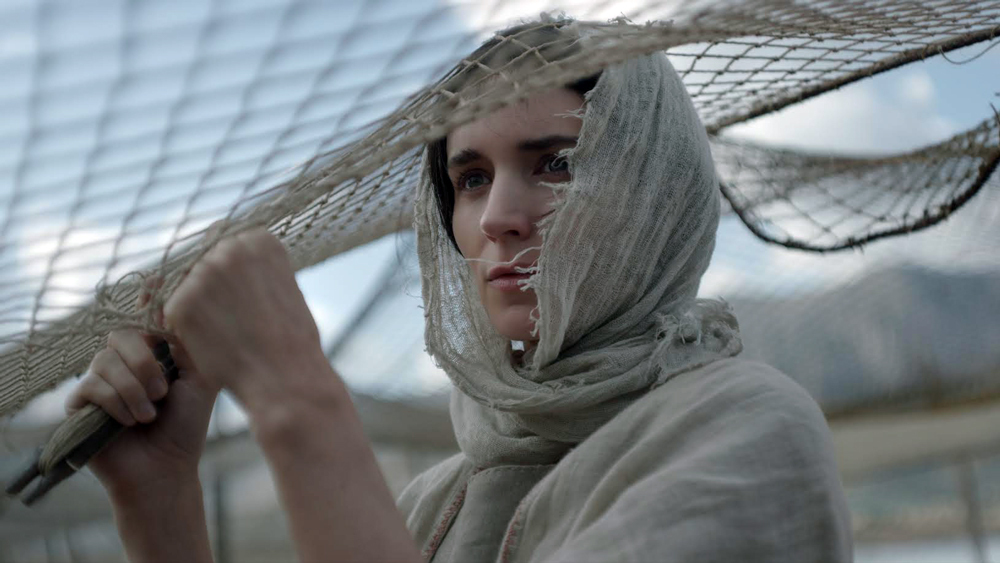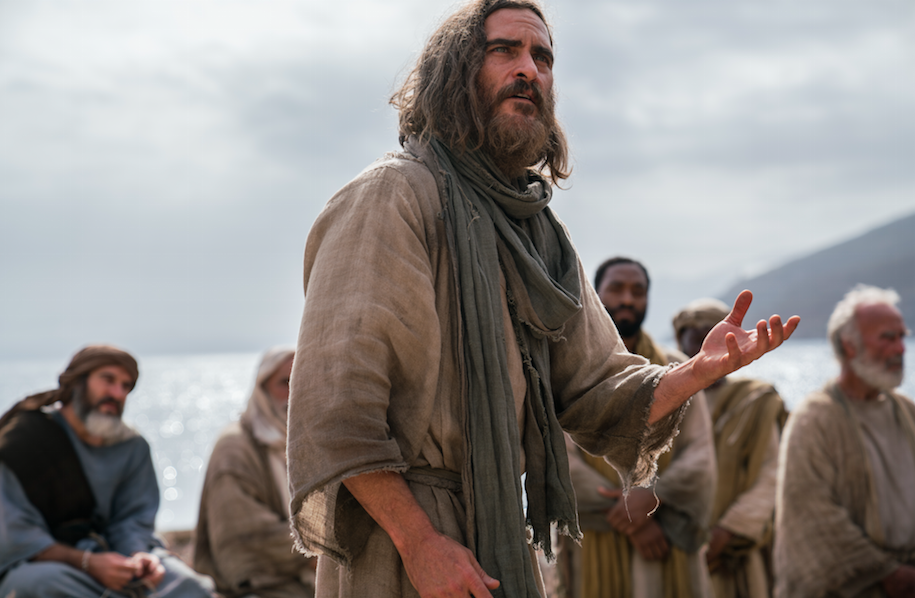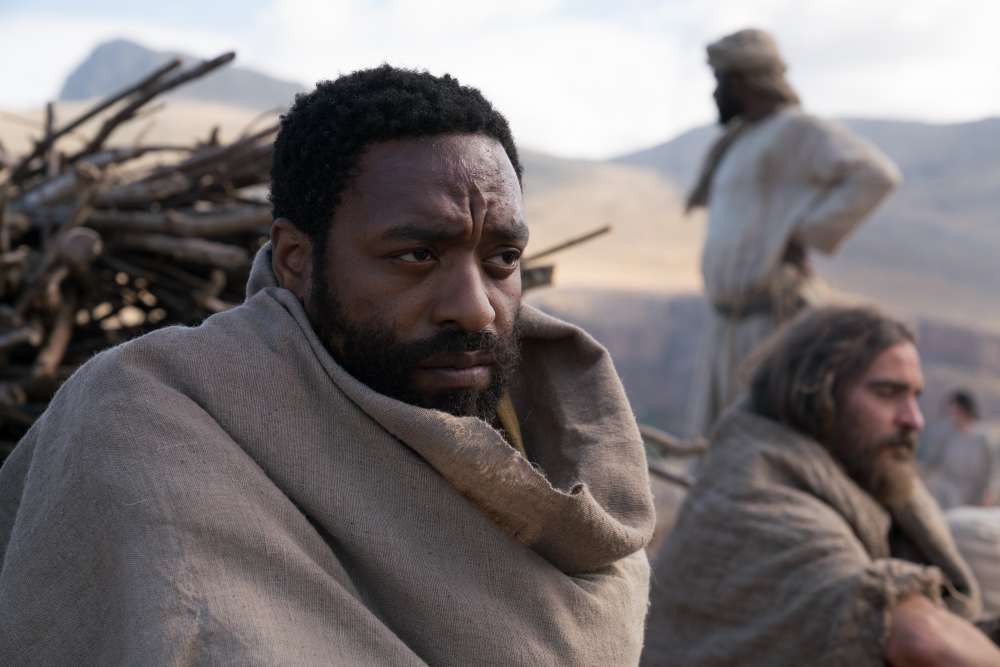DIRECTED BY: GARTH DAVIS/2019

Garth Davis follows his excellent feature length directorial debut, Lion, with a Biblical tale whose title evokes one of the most controversial, and misunderstood figures in the New Testament: Mary Magdalene. Like Lion, Davis allows the story to move forward at its own natural pace. Unlike Lion, Mary Magdalene’s pace is much to slow. As a result, Davis fails to generate any forward momentum or interest, despite strong performances and captivating cinematography, as he considers the figure of Christ through the eyes of one of his most unlikely followers in the first century culture of Judea: a woman.
Rooney Mara (Lion, A Ghost Story, Carol) stars as the titled character. The popular story that people think they know about Mary Magdalene is that she was a prostitute from the Galilean fishing town of Magdala. She was also reported to have had 7 demons leave her (Luke 8:1-3). She was seen in the gospel accounts of Jesus to have been a disciple of Jesus, even helping to provide for Jesus’ ministry out of her resources, indicating that she had some wealth. While she is mentioned 12 times in the Gospels, much of the myth that has developed over time comes from the Gnostic writings in the apocrypha.
These writings were dated long after Mary’s death, and are not seen as historically reliable. It is here that a storyline emerged of her having tension with the 12 disciples of Jesus, especially Peter. Prior to the reformation, she and Mary of Bethany, along with the woman who anoints Jesus’ feet prior to his death, were merged into the being the same woman, despite the Scriptures keeping them quite separate. In more recent times, she has been seen as a temptation in Martin Scorsese’s The Last Temptation of Christ where Jesus must wrestle with leaving the cross to instead marry Mary Magdalene and have a family. She shows sexual attraction to Jesus in Jesus Christ Superstar, and according to Dan Brown’s novel “The Da Vinci Code”, the Catholic church is hiding documents that prove Jesus and Mary were in fact married and bore children. To say that she is a complicated figure is an understatement, and Garth Davis cuts a completely new path in his depiction of her with his latest film.

In the film Mary Magdalene, Mary is a woman struggling with not understanding her place in this world. Living as a Jew under Roman occupation, and as a woman in a dominantly patriarchal society, Mary feels like she is swimming against the tide. Her father and older brother are trying to match her with a widower looking for a wife to be a mother for his children. Mary, however, rejects this match despite the shame it brings upon her family. This leads her family to attempt to perform an exorcism upon her, giving a nod to the idea of having a demon, though this is largely dismissed in the film as being the only plausible explanation her family can think of for why she is rebelling against their traditions and desires for her.
When “the healer” arrives in her area of the Galilee, she finds herself drawn to this curious rabbi’s message about the Kingdom of God, and the call to be baptized and follow him. Of course, this rabbi is Jesus, played by Joaquin Phoenix (The Master, Walk the Line, Her). Ignoring the pleas of her family, Mary is baptized by Jesus and begins to follow him with equal standing as the male disciples like Peter (Chiwetel Ejiofor-12 Years a Slave, Doctor Strange), Judas (Tahar Rahim-The Eagle), Andrew (Charles Babalola), and others.
The cinematography of Greig Fraser (Lion, Foxcatcher, Zero Dark Thirty) is absolutely beautiful. While the production is filmed in Italy, they do a remarkable job of giving the appearance of 1st century Judea. Having been to both Israel and Italy, it was easy to spot the truth, but the average viewer will find that Italy makes a compelling substitute and truly captures the feel of the various topography that Jesus would have traversed in his travels around the country on his way to the cross. The musical score of Johann Johannsson is one of the last that the late composer did. The music serves as a beautiful accompaniment to some truly haunting moments in the film such as when Jesus heals a dead man, and when Peter and Mary encounter a horrific find in a nearby town.

Phoenix and Mara are both very good in their portrayals, and compelling. They are able to present a completely fresh and new approach to these biblical figures. Phoenix’s Jesus is both whimsical and quick to laugh, while also being heavily burdened and mystical, sometimes seeming to be “somewhere else” when healing others, which causes the disciples and Mary to plead for him to “come back to us”. Mara’s Mary is kind, intuitive, and wise. She and Phoenix give evidence of a deep love between their characters, though this is never seen as sexual, but the love of a higher and purer form based on the understanding of the higher calling both are obedient to. For Jesus, this is the calling to lay down his life for humanity, and for her the calling to follow his mission and minister to others.
For those looking for biblical accuracy, this is where the film is a mixed bag. The film captures some unique looks at the healings Jesus performed, as well as a powerful look at the outrage he feels when seeking to drive the money changers from the temple. The disciples’ arguing their political aspirations for Jesus’ movement touches on real political arguments of the day such as the views of “the zealots” who thought Messiah would be a military leader who would use the will of the people to overthrow Rome. That said, these arguments are made not by the disciples identified in the Bible as the zealots of the group like Simon the Zealot, or Judas Iscariot. In Mary Magdalene it is by Peter, which feels more like an excuse to beef up Ejiofor’s role, and play up the more popular take that this was a source of conflict for Mary Magdalene and Peter. Christ no longer rides the donkey into Jerusalem for Palm Sunday, and the trial of Christ is passed over since its been covered in so many other films. Viewer reactions will vary on some of these type of changes.

The more interesting thing for Davis seems to be the notion that it was a woman who is mentioned in 3 of the Gospel accounts as being a full disciple of Christ, one of the only ones to witness the death, burial, and resurrection of Jesus, and that radical notion that she was chosen to carry the message back to the other disciples that Jesus was alive just days following his burial. The implications of this message would have been revolutionary during 33 CE, when this film is set, but sadly in 2019 it still seems like a radical idea among the church, and even in our progressive culture. Christians might not sense that Davis’ direction lends any credence to the divinity of Jesus, but it doesn’t seek to show this central teaching of Christianity any disrespect either.
Mary Magdalene is clearly being released near the time that Christians celebrate Christ’s resurrection, but this biblical story is more interested in the radical notions of Jesus’ teaching, and message, of the Kingdom of God. The “Kingdom” of this film is not necessarily the idea that this Kingdom is emerging in the midst of the old order and that it will eventually culminate in a global theocracy with Jesus literally sitting on a throne ruling a world that has been transformed completely, eradicating sin and death. Instead, Davis focuses on the notions of a more abstract and figurative kingdom we can all build that is based on the ideals of love, transformation, and the belief that we can surrender ourselves to the pursuit of being the change we want to see in our world. This is all done, of course, though the eyes of one of scriptures most misunderstood heroes: Mary Magdalene.


